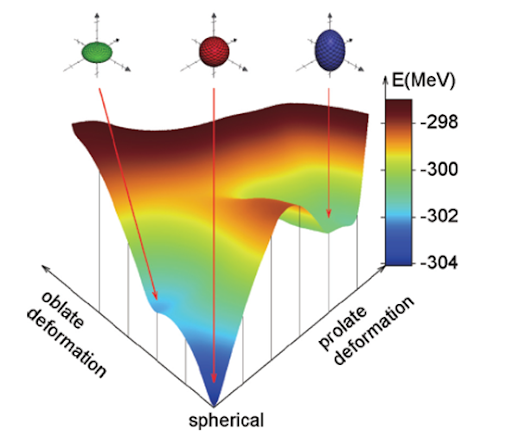Since the beginning of the 21st century, nuclear physicists have had the opportunity to explore the properties of atomic nuclei with more neutrons than those found in the stable nuclei making up our world. They discovered unknown aspects of the nuclear force that is responsible for holding atomic nuclei together. Shell structure is essential for a satisfactory description of nuclei. From the properties of the stable atomic nuclei, it was concluded over half a century ago that nuclei with 2, 8, 20, 28, 50, 82, protons or neutrons have enhanced stability. For this discovery, Maria Goeppert Mayer, Eugene Wigner, and Hans Jensen shared the 1963 Nobel Prize in Physics. Afterward, it was discovered that there is an additional such number, 126, for neutrons. These “magic numbers” appear when large gaps in energy occur between two shells. More recently, it was found that the magic numbers are not as immutable as originally thought and that the nuclear shells shift in energy depending on the neutron excess (see Robert V. F. Janssens, Nature 435, 897 (2005)). Neutron-rich nuclei indicate, for example, that 32 is one such new magic number. Scientists have also discovered that the sequence in which the various shells appear is also altered by the presence of additional neutrons and that this affects the shape of the nuclei involved.
An international collaboration, led by UNC’s Robert Janssens, has discovered that 68Nican sustain three distinct shapes (F. Recchia, C. J. Chiara, R. V. F. Janssens et al., Phys. Rev. C 88, 041302(R) (2013)). This is illustrated in the image, where the binding energy of the nucleus is represented as a function of its deformation. The ground state of 68Ni is spherical. However, two other levels were found at slightly higher energy and were shown to be associated with an oblate (doorknob shape; on the left) and a prolate shape (American football; on the right). The experiments were carried out at Argonne National Laboratory and at Michigan State University, where accelerators capable of producing neutron-rich nuclei are available. Follow-up experiments, involving 64Ni, were carried out this past summer at the local Triangle Universities Nuclear Laboratory, and candidate level for shape ha been discovered.


